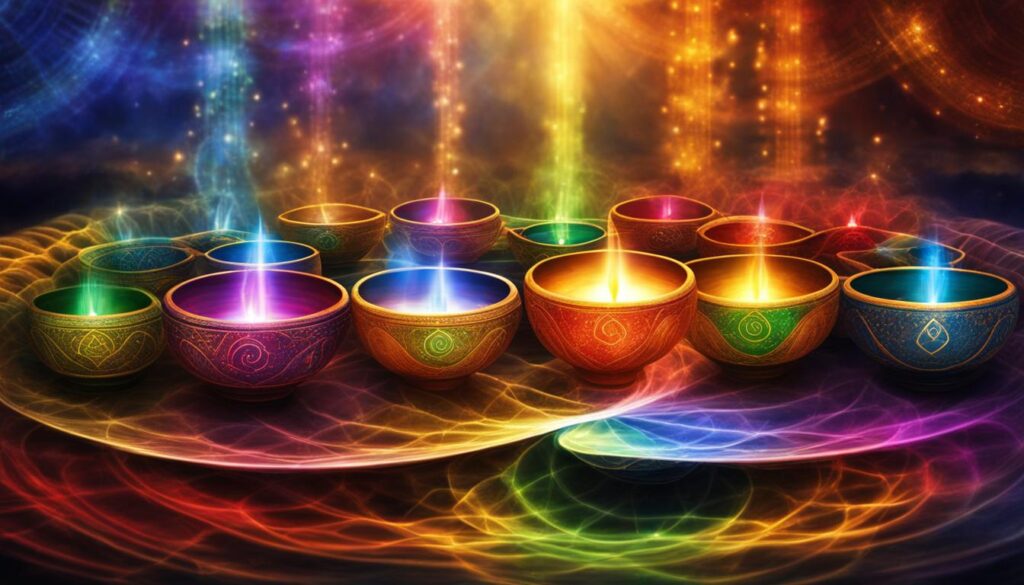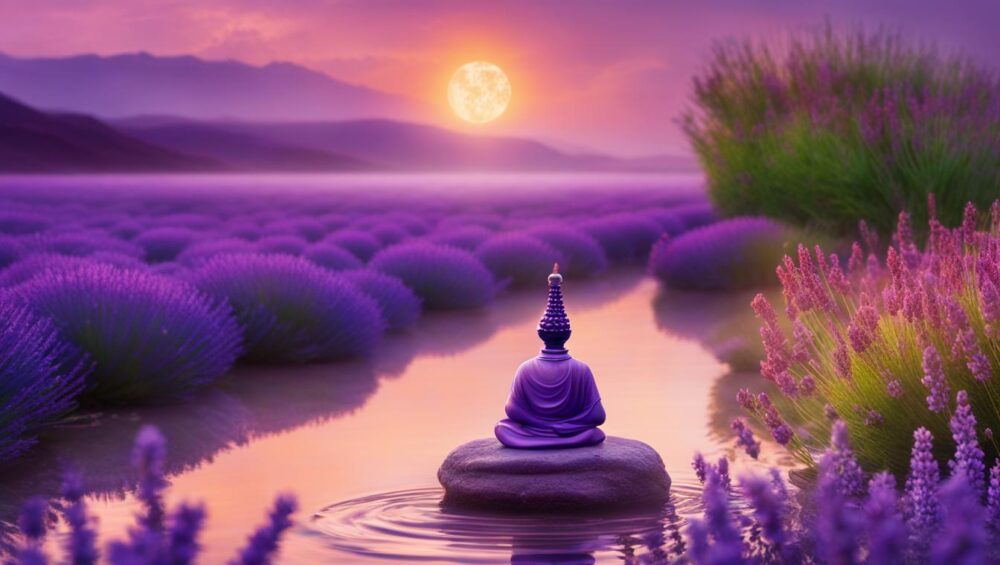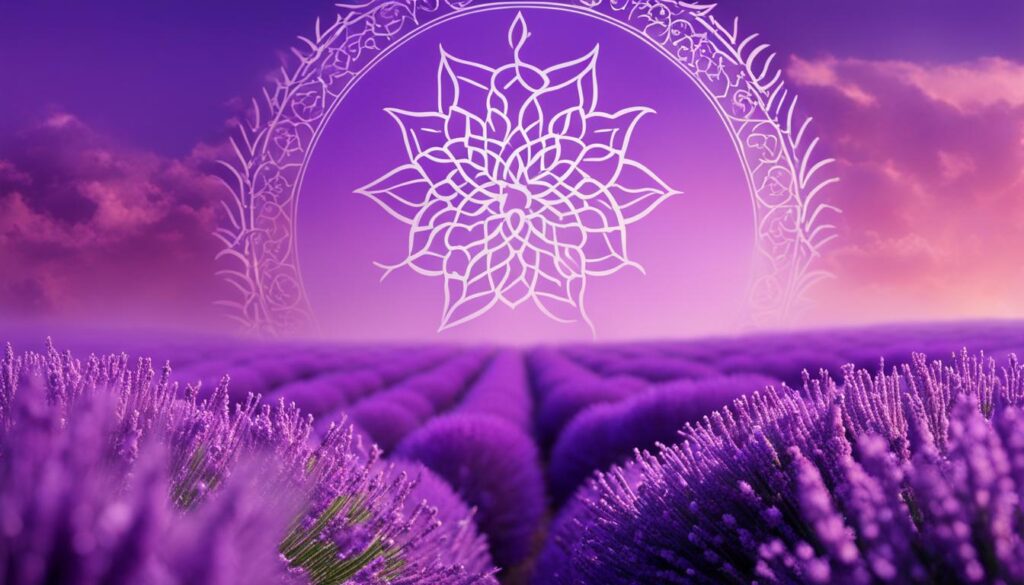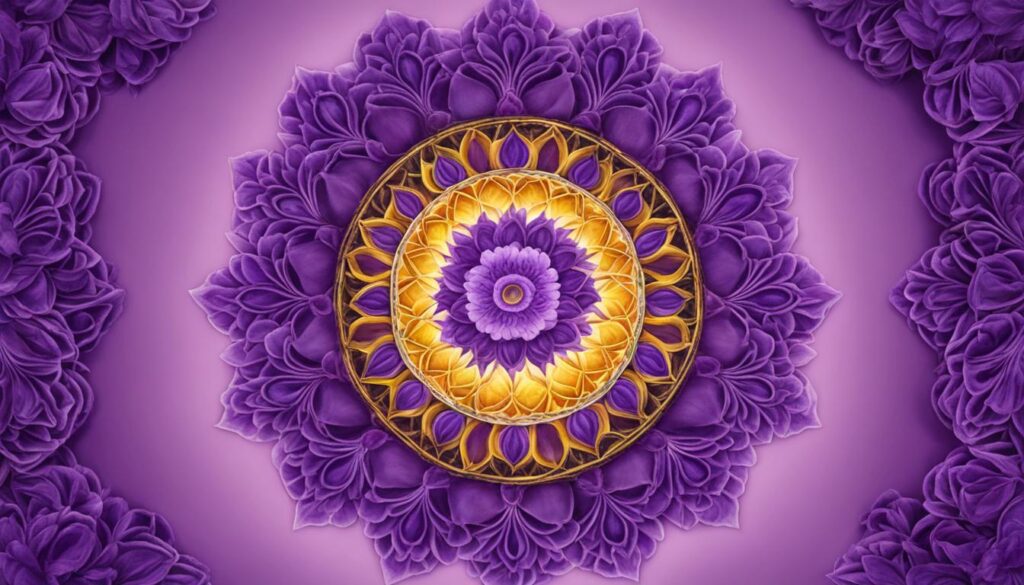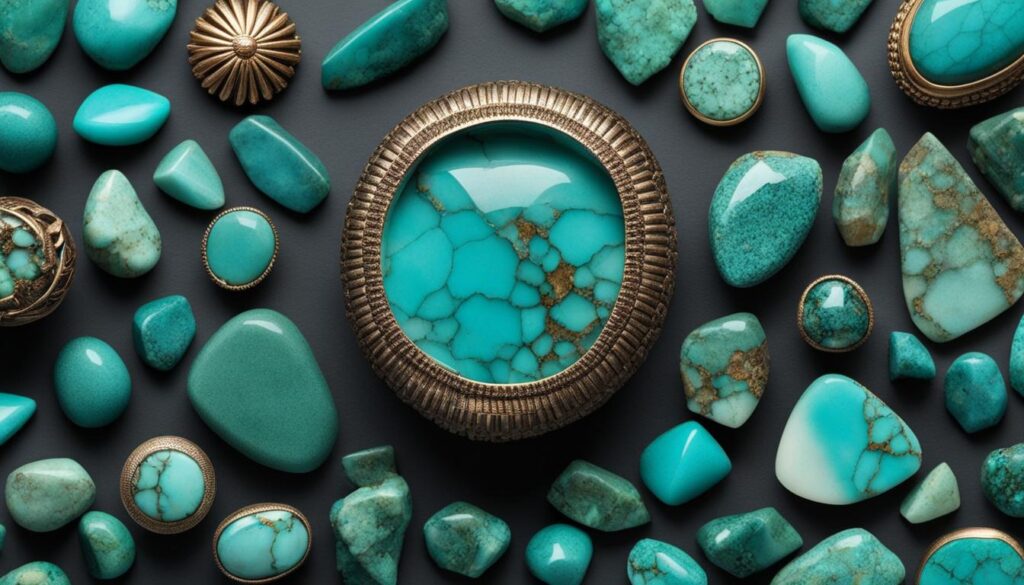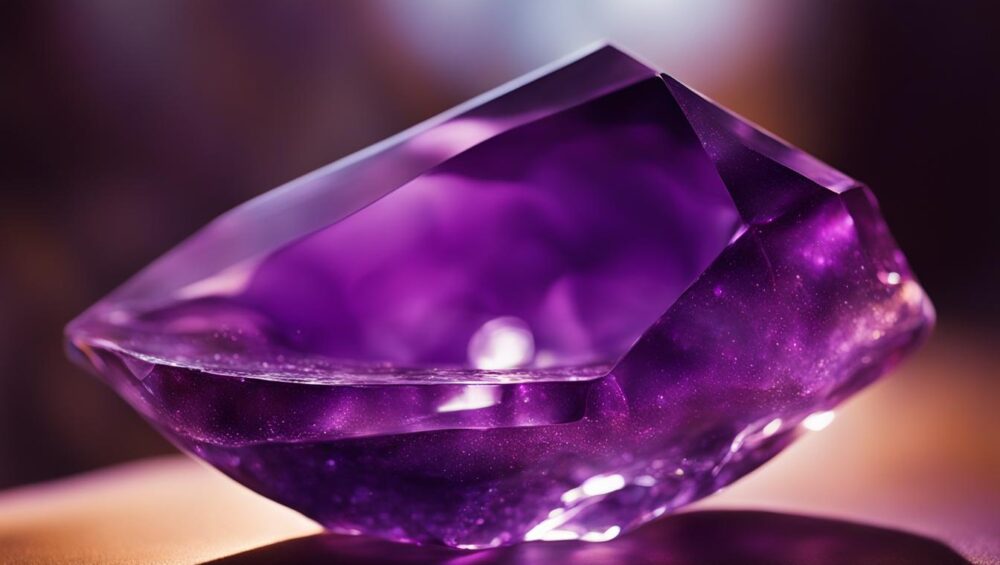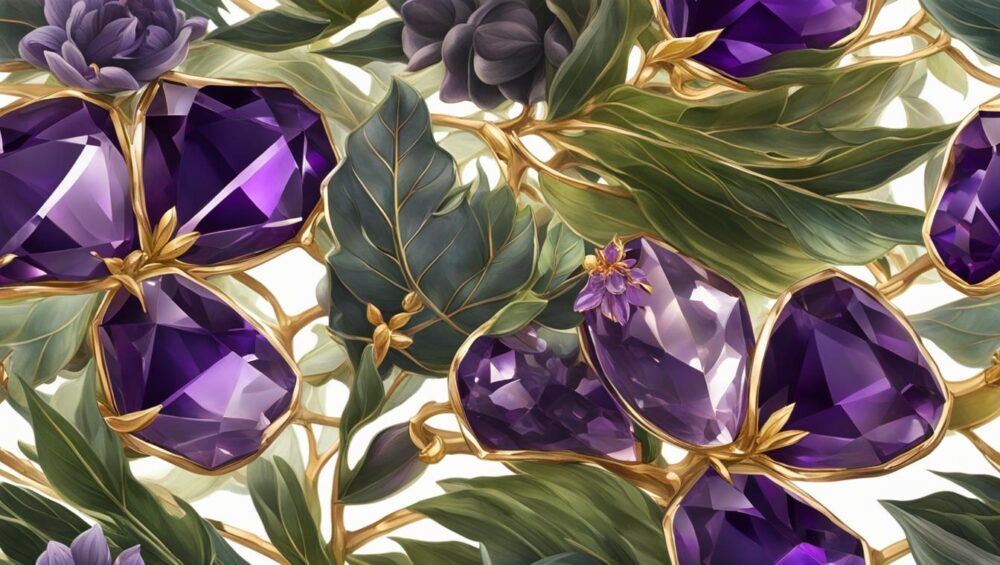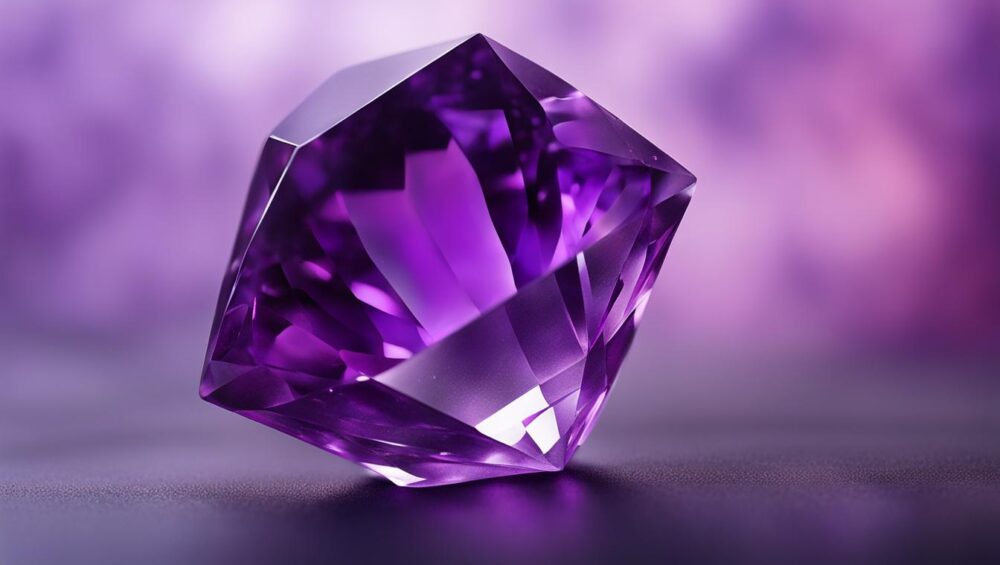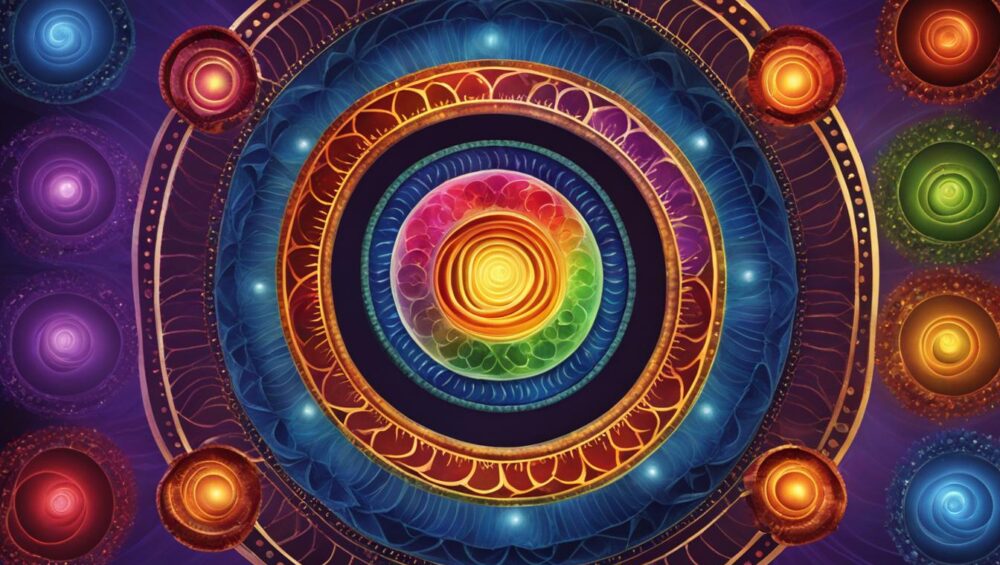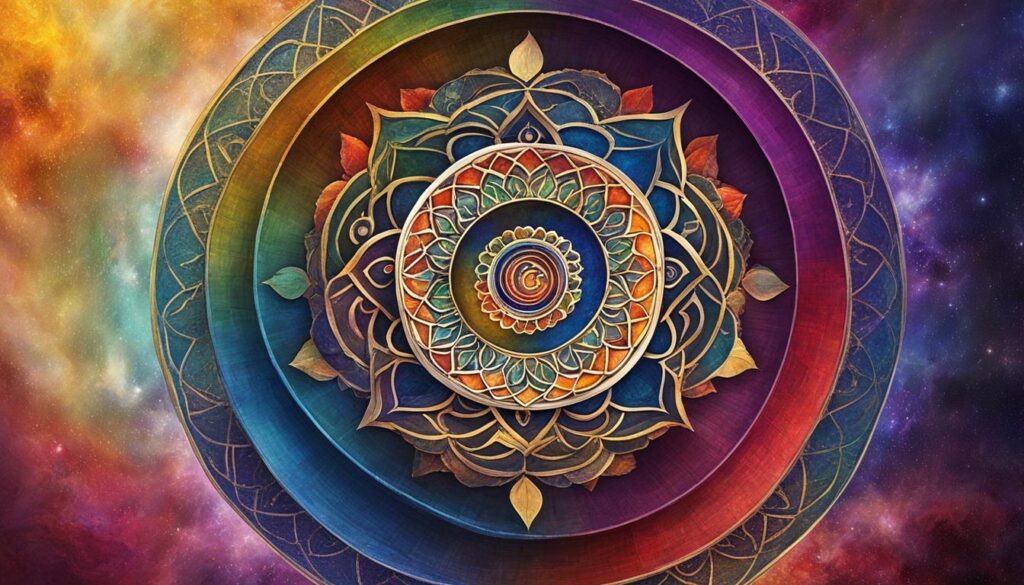According to ancient Hindu philosophy, chakras are energy centers in our bodies that govern different aspects of our well-being. Each zodiac sign is associated with a specific chakra, and for Cancer, the nurturing and compassionate sign, it corresponds to the heart chakra. Balancing the heart chakra can help Cancer individuals with emotional healing and promoting love and compassion.
Key Takeaways:
- The heart chakra is associated with the zodiac sign Cancer.
- By balancing the heart chakra, Cancer individuals can experience emotional healing.
- The heart chakra promotes love, compassion, and nurturing qualities.
- Cancer individuals can explore various techniques to balance their heart chakra and enhance their overall well-being.
- Understanding the connection between chakras and zodiac signs can provide deeper insights into personal energy and healing.
The Connection Between Chakras and Zodiac Signs
Have you ever wondered about the fascinating connection between chakras and zodiac signs? This intriguing relationship has gained significant attention in recent years, as people seek to explore the depths of their energetic selves. Each zodiac sign is associated with specific energy patterns and characteristics that align with the chakras, contributing to a profound understanding of our inner selves.
By delving into this connection, individuals can gain valuable insights into their energetic imbalances and use specific healing techniques to restore balance and harmony in their lives. Astrology and chakra healing come together to create a holistic approach to well-being, encompassing both the physical and metaphysical aspects of our existence.
Let’s take a closer look at how these two powerful systems intertwine and ignite transformative journeys towards self-discovery and healing.
“Astrology and chakra healing intertwine to create a transformative journey towards self-discovery and healing.”
When we consider the chakras in relation to the zodiac signs, we can identify the energy centers that are most influential for each sign. Understanding the connection between chakras and zodiac signs opens up a world of possibilities for individual growth and self-awareness.
The Zodiac Signs and Their Chakra Connections
Let’s explore the chakra associations for each zodiac sign:
| Zodiac Sign | Chakra |
|---|---|
| Aries | Sacral Chakra |
| Taurus | Root Chakra |
| Gemini | Throat Chakra |
| Cancer | Heart Chakra |
| Leo | Solar Plexus Chakra |
| Virgo | Third Eye Chakra |
| Libra | Crown Chakra |
| Scorpio | Sacral Chakra |
| Sagittarius | Root Chakra |
| Capricorn | Throat Chakra |
| Aquarius | Heart Chakra |
| Pisces | Solar Plexus Chakra |
This table highlights the chakra associated with each zodiac sign, providing a foundation for further exploration of the energy and attributes associated with each sign.
As we continue our journey, we will delve deeper into the connection between chakras and zodiac signs, focusing on specific signs and their corresponding chakras. Stay tuned for the upcoming sections where we explore the energetic foundations of each zodiac sign and the healing techniques associated with them.
Chakras and Zodiac Signs: Aries to Virgo
Each zodiac sign corresponds to a particular chakra, creating a unique energetic connection. Let’s explore the chakras associated with Aries, Taurus, Gemini, Cancer, Leo, and Virgo, and how they can influence our well-being.
Aries: Sacral Chakra
As a fiery and passionate sign, Aries aligns with the sacral chakra. This chakra, located in the lower abdomen, governs our creativity, passion, and sexual energy. When the sacral chakra is balanced, Aries individuals can express themselves freely and tap into their innate creativity.
Taurus: Root Chakra
Taurus, an earth sign known for its stability and grounding energy, corresponds to the root chakra. Located at the base of the spine, this chakra represents our foundation, security, and connection to the physical world. Balancing the root chakra allows Taurus individuals to feel grounded and secure in all aspects of their lives.
Gemini: Throat Chakra
Gemini, an air sign known for its communication and versatility, resonates with the throat chakra. This chakra governs our ability to express ourselves and communicate effectively. When the throat chakra is in balance, Gemini individuals can articulate their thoughts and ideas with clarity and authenticity.
Cancer: Heart Chakra
Cancer, a water sign associated with nurturing and compassion, corresponds to the heart chakra. This chakra governs love, empathy, and emotional healing. Balancing the heart chakra allows Cancer individuals to experience deep connections, cultivate compassion, and foster emotional well-being.
Leo: Solar Plexus Chakra
Leo, a passionate and confident fire sign, aligns with the solar plexus chakra. Located in the upper abdomen, this chakra represents personal power, self-confidence, and creativity. When the solar plexus chakra is balanced, Leo individuals can harness their inner strength and express their unique gifts with self-assurance.
Virgo: Third Eye Chakra
Virgo, an analytical and detail-oriented earth sign, corresponds to the third eye chakra. Located between the eyebrows, this chakra represents intuition, wisdom, and spiritual insight. Balancing the third eye chakra allows Virgo individuals to tap into their inner wisdom and access their intuitive abilities.
Understanding the connection between these signs and chakras can provide valuable insights into specific areas of focus for balancing and healing. By channeling the energies of their corresponding chakras, individuals can optimize their well-being and align with their truest selves.
Chakras and Zodiac Signs: Libra to Pisces
Continuing the exploration of the connection between zodiac signs and chakras, each sign from Libra to Pisces is associated with a specific chakra, influencing different aspects of their energy and well-being.
| Zodiac Sign | Chakra |
|---|---|
| Libra | Crown Chakra |
| Scorpio | Sacral Chakra |
| Sagittarius | Root Chakra |
| Capricorn | Throat Chakra |
| Aquarius | Heart Chakra |
| Pisces | Solar Plexus Chakra |
Understanding the connection between these signs and chakras provides valuable insights into specific areas of focus for balancing and healing.
Understanding the Cancer Chakra: Sacral Chakra Activation
Cancer individuals, born between June 21 and July 22, are associated with the sacral chakra. Located in the lower abdomen, this chakra holds significant importance in governing emotions, creativity, sensuality, and the flow of life force energy. By focusing on balancing the sacral chakra, Cancer individuals can enhance their emotional well-being, stimulate their creative expression, and foster the cultivation of healthy relationships.
The sacral chakra is a vital energy center that influences various aspects of a person’s life. When this chakra is in balance, individuals experience a harmonious flow of emotions, a vibrant creative drive, and a deep sense of connection to their sensuality. However, when imbalanced, it can manifest as emotional instability, blocked creativity, or difficulties in intimate connections.
There are various techniques available to heal and balance the sacral chakra for Cancer individuals. These methods empower individuals to restore equilibrium and unlock their full emotional and creative potential. Examples include meditation practices designed to activate and cleanse the sacral chakra, engaging in water-based activities that symbolize the fluidity of emotions, and working with specific gemstones associated with the sacral chakra.
By channeling their energy into sacral chakra healing, Cancer individuals can experience profound transformation in their lives, nurturing their emotional well-being, amplifying their creative expression, and fostering harmonious connections in their relationships.
Exploring Balancing Techniques for the Cancer Chakra
When it comes to balancing the Cancer chakra, there are various techniques that can help individuals restore harmony and promote emotional well-being. Incorporating these practices into your daily routine can assist in releasing stagnant energy, fostering emotional healing, and aligning with the fluid nature of emotions associated with the sacral chakra.
Emotional Release Practices
One effective way to balance the Cancer chakra is through emotional release practices. Journaling, for instance, allows you to express your thoughts and feelings freely, creating a space for emotional release and self-reflection. Art therapy is another valuable practice, using creative outlets like painting or drawing to channel and release emotions.
Remember, emotional release practices are personal and unique to each individual. Find what resonates with you and create a safe space for emotional exploration and healing.
Sacral Chakra Meditations
Sacral chakra meditations can be a powerful tool in balancing the Cancer chakra. During these meditations, visualize a warm, glowing orange light emanating from your lower abdomen, where the sacral chakra is located. As you focus on this visualization, imagine the light expanding and flowing smoothly, bringing balance and healing to your emotions and creativity.
Water-based Activities
Water is deeply connected to the sacral chakra and can assist in balancing its energy. Engaging in water-based activities such as swimming, water aerobics, or taking soothing baths can help align with the fluid, emotional nature of the sacral chakra. Allow the water to wash away any stagnant energy and bring renewal and balance to your emotional well-being.
Gemstones for the Sacral Chakra
Another way to support the balance of the Cancer chakra is by incorporating gemstones that resonate with the energy of the sacral chakra. The use of orange gemstones, like carnelian and orange calcite, can help stimulate and harmonize the sacral chakra. Carry these gemstones with you or place them near your workspace or meditation area to enhance the healing process.
Incorporating these balancing techniques into your daily routine can have a profound impact on aligning and supporting the Cancer chakra’s energy. Remember to explore and experiment with different practices to find what works best for you, allowing you to experience emotional healing, enhanced creativity, and a deeper connection to your inner self.
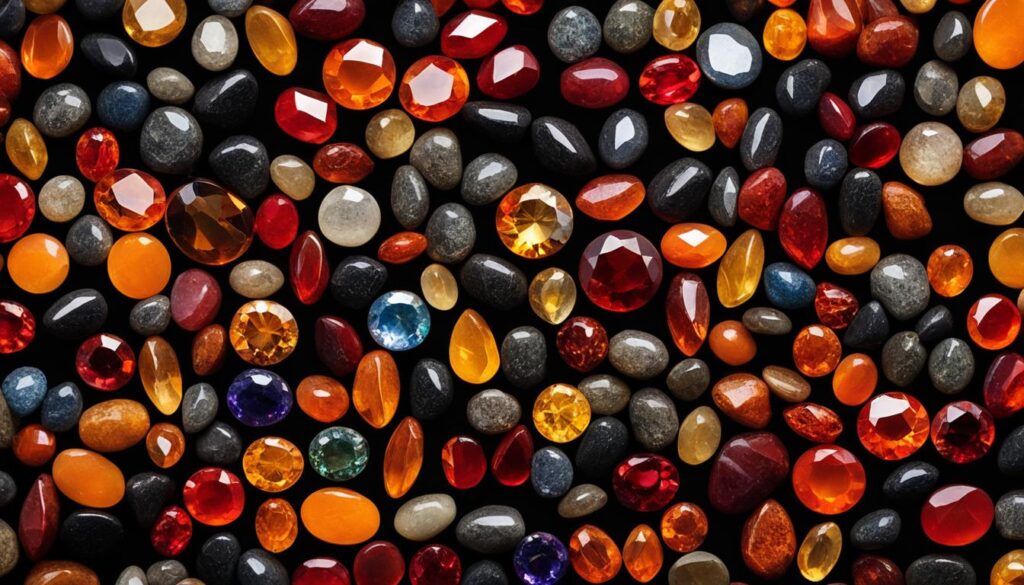
| Gemstone | Properties |
|---|---|
| Carnelian | Stimulates creativity, enhances courage and motivation, balances emotions |
| Orange Calcite | Promotes emotional healing, enhances self-confidence and vitality, increases joy |
The Significance of Cancer Energy and the Sacral Chakra
Cancer, as a cardinal water sign, embodies nurturing, intuition, and empathy. Aligning closely with the attributes of the sacral chakra, Cancer individuals possess emotional sensitivity, creativity, and a deep connection to home and family. The sacral chakra, located in the lower abdomen, governs emotions, creativity, sensuality, and the flow of life force energy. Understanding the significance of the Cancer chakra can provide insights into their unique energetic makeup and how to foster emotional well-being and creative expression.

Conclusion
By balancing the chakras based on zodiac signs, individuals can gain insight and guidance for their overall well-being. For Cancer individuals, focusing on the heart chakra can be particularly beneficial, as it facilitates emotional healing and cultivates love and compassion. Understanding the connection between zodiac signs and chakras allows individuals to tap into their full potential and establish a deeper connection with themselves and the world around them.
Chakra healing techniques, such as meditation, energy work, and using gemstones, can help in aligning and balancing the chakras. Cancer individuals can specifically benefit from practices that harmonize the heart chakra, such as practicing self-love, extending kindness to others, and engaging in compassionate acts.
By nurturing the heart chakra, Cancer individuals can experience emotional stability, enhanced relationships, and a greater sense of inner peace.
We’ve explored the significance of the Cancer energy and its connection to the sacral chakra. Cancer individuals are known for their emotional sensitivity, creativity, and strong connection to home and family. By addressing the needs of the sacral chakra, such as through emotional release practices and water-based activities, Cancer individuals can harness their unique energetic makeup and thrive in their personal and creative endeavors.
Overall, understanding the relationship between zodiac signs and chakras offers a transformative journey of self-discovery and growth. By working towards chakra balance and healing, individuals can unlock their true potential and live a more fulfilled and harmonious life.
FAQ
What is the connection between chakras and zodiac signs?
Each zodiac sign is associated with specific energy patterns and characteristics that align with the chakras. By understanding this connection, individuals can gain insights into their energetic imbalances and use specific healing techniques to restore balance and harmony in their lives.
Which chakra is associated with the Cancer zodiac sign?
Cancer, the nurturing and compassionate sign, corresponds to the heart chakra. Balancing the heart chakra can help Cancer individuals with emotional healing and promoting love and compassion.
How can I balance the Cancer chakra?
To balance the Cancer chakra, individuals can engage in practices that facilitate emotional release, such as journaling or art therapy. Sacral chakra meditations focused on visualizing an orange light in the lower abdomen can also aid in restoring balance. Water-based activities, like swimming or taking soothing baths, can align with the fluid nature of emotions. Using orange gemstones, like carnelian and orange calcite, can resonate with the energy of the sacral chakra.
What are the characteristics of Cancer individuals?
Cancer, as a cardinal water sign, embodies nurturing, intuition, and empathy. Cancer individuals possess emotional sensitivity, creativity, and a deep connection to home and family. Understanding the significance of the Cancer chakra can provide insights into their unique energetic makeup and how to foster emotional well-being and creative expression.
How can balancing the chakras based on zodiac signs contribute to well-being?
Balancing the chakras based on zodiac signs can offer guidance and support for promoting overall well-being. For Cancer individuals, the focus on the heart chakra can aid in emotional healing and foster love and compassion. By understanding the connection between zodiac signs and chakras, individuals can unlock their full potential and experience a deeper connection to themselves and the world around them.



